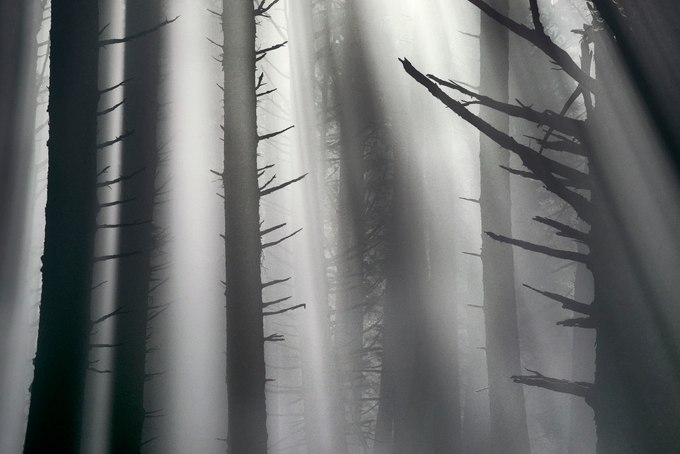Sitka spruce inhabited glacial moraines left from the last ice age along the Pacific coast from California to Alaska. They thrive on frequent morning fog and are unfazed by clouds of salty wave spray from onshore winds. This species welcomes the fury of late fall's blustery storms and winter's ample rains. Though the low sun of December's solstice does not penetrate the thick stands easily, the trees continuously grow from year-round photosynthesis and can live up to 800 years.
This morning, the sun broke above the foothills' high horizon that backdrops this portion of Oregon's west coast and shone down on a fog-bound beach through a dense Sitka forest. Under their deep shade, lower branches have lost their needles and broken into sharp spears that cut the light. Filtered rays added depth and dimension to the woods; the brighter, sharper shafts foregrounded the nearest trees against the softly lit inner grove.
The beauty and spectacle of sunbeams sifted through steamy layers of tree trunks, branches, and leaves has lent itself to various interpretations. In Japan, the word 'komorebi' is often used to describe the feeling of sunlight filtering through the branches of trees. Among many cultures, sun rays illuminating the primeval dark of the forest, mark the approach or presence of a celestial being.
- James Baker

